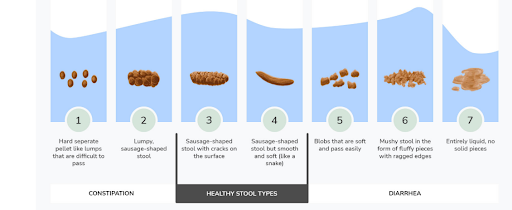What Is Your Child’s Poop Really Telling You?
Original Author: Ravina Thomas, Functional Medicine Practitioner.
Let’s talk about something that everyone does… but no one wants to talk about: poop.
Yes, it may seem gross. But for functional medicine practitioners like me, poop is gold. It’s one of the clearest windows into your child’s gut health, immune system, detox pathways, and even mood.
And if your child struggles with constipation, loose stools, belly aches, or even unexplained behavior changes, you should be paying attention to what’s in the toilet.
Possible Concerns of your Child’s Stool
As uncomfortable as it sounds, your child’s stool is a vital sign, like conducting a temperature or pulse check.The shape, texture, and frequency of their bowel movements can reveal:
-Inflammation
-Dysbiosis (an imbalance in gut bacteria)
-Nutrient absorption issues
-Dehydration
-Nervous system stress
-A struggling detox pathway
Enter the Bristol Stool Chart, a tool I use with every family in my gut health program. It breaks poop down into 7 types, ranging from rock-hard pellets (signs of constipation) to watery mush (signs of possible inflammation or poor nutrient absorption).
Bristol Stool Chart
Take a look at the graphic below and ask yourself:
-What number matches my child’s most common poop?
-Has it changed recently?
-Are they going days without going—or going too many times a day?
The Gut-Brain-Behavior Connection
You might be wondering, “What does poop have to do with my child’s mood or focus?”
A lot, actually.
The gut is home to over 70% of the immune system, 95% of serotonin receptors, and trillions of microbes that impact everything from energy levels to emotional regulation. If your child’s bowels aren’t moving properly, their nervous system can get overloaded, leading to tantrums, anxiety, foggy thinking, and even sleep issues. This is not just about food sensitivities or fiber. It’s about the whole ecosystem inside your child’s belly and whether it’s working with them, or against them.
Why Laxatives Aren’t Actually Working
Many parents turn to over-the-counter options like Miralax, RestoraLAX, or even daily fiber gummies. The truth is, laxatives act as band-aids to symptoms but don’t address the underlying problems in unsettling bowel movements.
Long-term use of laxatives, especially PEG-based products like Miralax has been flagged in pediatric research for disrupting the microbiome, dulling natural digestive signals, and even contributing to behavior changes (FDA PEG 3350 review).
In contrast, a functional medicine approach looks at the why, and supports the body to correct the issue, not mask it.
Let’s Decode the Bristol Chart
If your child’s poop looks like a 1, 2, 6, or 7 on the Bristol Chart…
If they complain of tummy aches or never want to use the bathroom away from home…
If you just know in your gut (pun intended) that something’s off…
You don’t have to guess anymore.
Join me inside Tummy Truths™, a functional medicine–based program designed to help you understand what’s going on inside your child’s body, and how to get things moving gently, naturally, and long-term.
Talk to a Functional Medicine Practitioner
Book a free 15-minute consultation with me on the Miss Poppins App and let’s chat about what’s showing up in the bathroom and what it means for your child’s total health. Begin to take steps to make changes in your child’s gut and behavior health, making them feel food from the inside out.


